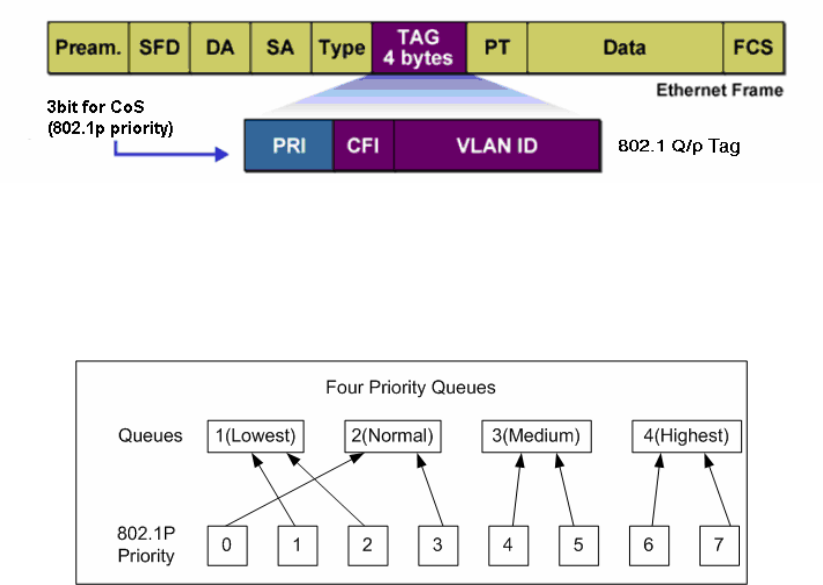
1.
Port Based
When port-base QoS mode is enabled, the user can manually map the ingress packets of the port
to four different priority queues. After that, the switch will preferentially send packets in the queue
with higher priority, and only when the queue with higher priority is empty, packets in the queue
with lower priority are sent.
2. 802.1P Based
Figure 6-2 802.1Q frame
As shown in the figure above, each 802.1Q Tag has a Pri field, comprising 3 bits. The 3-bit priority
field is 802.1p priority in the range of 0 to 7. The 802.1p priority value determines how the switch
maps the ingress packets to the priority queues. The mapping relationship between eight 802.1p
priority value and priority queues is shown as follows:
Figure 6-3 Map 802.1P priority
Priority 1 and 2 are assigned to the 1 (Lowest) priority queue.
Priority 0 and 3 are assigned to the 2 (Normal) priority queue.
Priority 4 and 5 are assigned to the 3 (Medium) priority queue.
Priority 6 and 7 are assigned to the 4 (Highest) priority queue.
When 802.1P QoS mode is enabled, the switch will automatically map the ingress packets to
priority queues based on the 802.1p priority and the above mapping relationship. After that, the
switch will preferentially send packets in the queue with higher priority, and only when the queue
with higher priority is empty, packets in the queue with lower priority are sent. As for the untagged
packets, the switch will forward it according to the default port-based QoS mode.
The QoS module is mainly for priority configuration and traffic control, including three submenus:
QoS Basic, Bandwidth Control and Storm Control.
6.1 QoS Basic
This switch classifies the ingress packets, maps the packets to different priority queues and then
forwards the packets to implement QoS function.
This switch implements two priority modes based on port and on 802.1P. The port-based QoS mode
supports four priority queues. The port priority queues are labeled as 1, 2, 3, and 4.
30


















